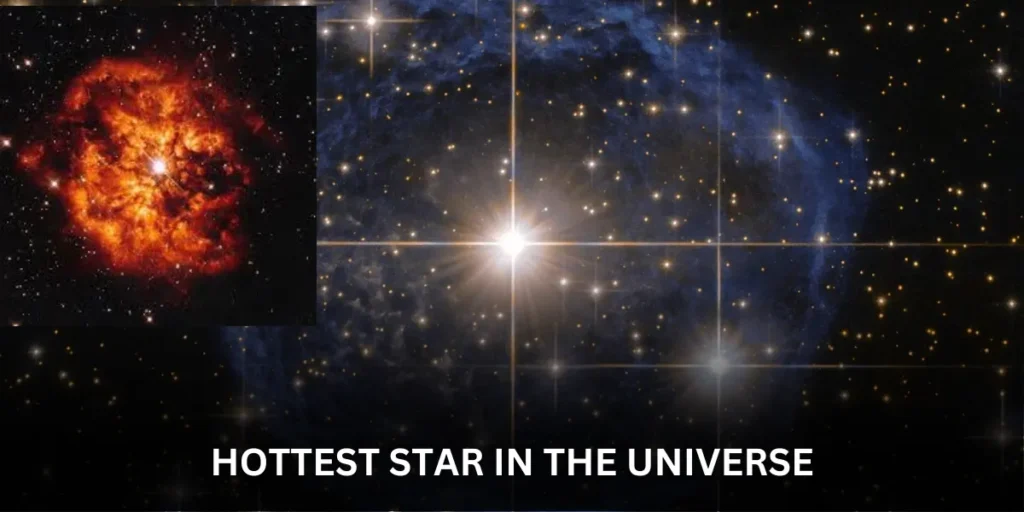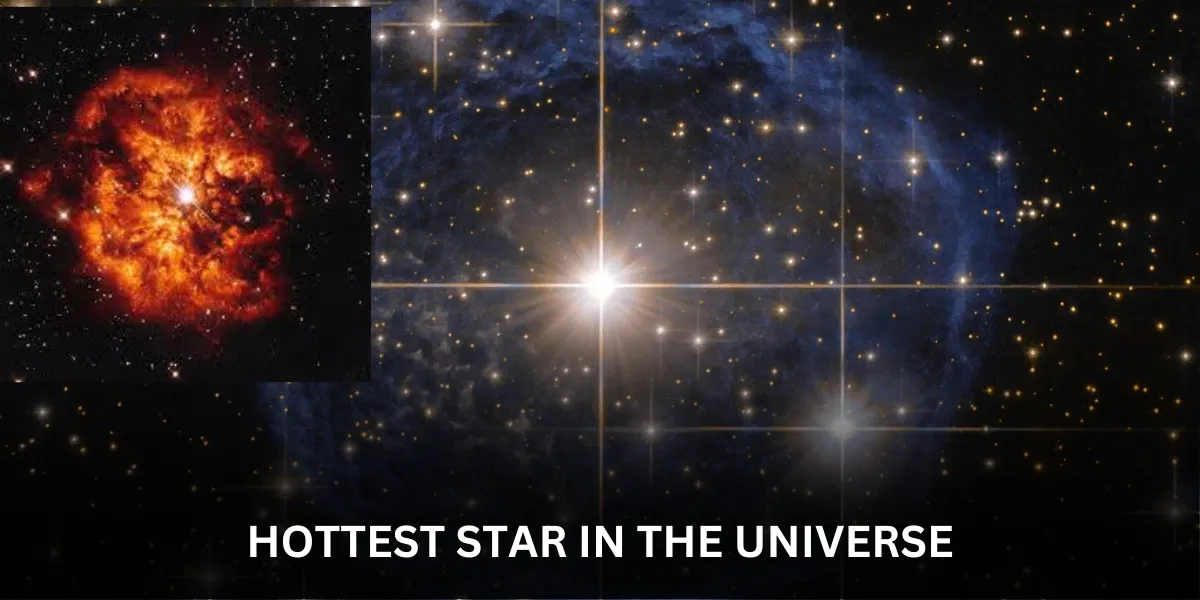
Blazing Bright: WR 102 Confirmed as Universe’s Hottest Star
July 6, 2024 – Astronomers have solidified their knowledge about the reigning champion of stellar temperatures. The scorching star WR 102, located roughly 8,000 light-years away in the constellation Sagittarius, has been officially crowned the hottest star ever discovered.
WR 102 belongs to a rare class of stars known as Wolf-Rayet stars. These stellar giants are famous for their immense size, intense brightness, and scorching surface temperatures. But even among Wolf-Rayet stars, WR 102 stands out. It boasts a blistering surface temperature exceeding a staggering 209,727 degrees Celsius (377,540 degrees Fahrenheit). That’s over 35 times hotter than our Sun!
How do astronomers measure such extreme temperatures? They can’t exactly stick a thermometer on a star! Instead, they analyze the light emitted by the star. Every object, including stars, emits light at specific wavelengths depending on its temperature. By studying the spectrum of light coming from WR 102, scientists can decipher the star’s scorching surface temperature.
But WR 102’s claim to fame goes beyond just heat. It’s also classified as a WO-type Wolf-Rayet star, which is an even more exclusive club. WO stars are Wolf-Rayet stars in their later stages of evolution, where their atmospheres are rich in oxygen. Astronomers have only discovered about ten WO-type stars in the entire Milky Way galaxy, making WR 102 a truly unique specimen.
So what makes WR 102 so incredibly hot? The answer lies in its immense size and furious nuclear reactions. WR 102 is many times larger than our Sun, with an estimated mass that was originally 20 times greater. In its core, nuclear fusion – the process that powers stars – is happening at a breakneck pace. Hydrogen atoms are smashed together to form helium, releasing tremendous amounts of energy in the form of heat and light.
However, WR 102 is a burning candle with two ends. Due to its incredible size and scorching temperatures, WR 102 is also losing mass at an alarming rate. Powerful stellar winds are constantly blowing away gas from the star’s surface at speeds exceeding millions of kilometers per hour. It’s estimated that WR 102 loses the equivalent of one Sun’s mass every 100,000 years!
This rapid mass loss has a significant impact on WR 102’s future. As it sheds mass, the star’s core becomes increasingly exposed. Eventually, WR 102 will reach a critical point where it can no longer sustain nuclear fusion. This will trigger a violent stellar explosion known as a supernova, leaving behind a collapsed core that could become a neutron star or even a black hole.
Studying hottest star in the universe 02 offers valuable insights into the life cycle of massive stars. By observing its extreme properties, astronomers can better understand the delicate balance between nuclear fusion, gravity, and stellar winds that dictates a star’s fate. WR 102 may be a scorching giant, but it serves as a crucial reminder of the powerful and dynamic processes that govern the universe.
